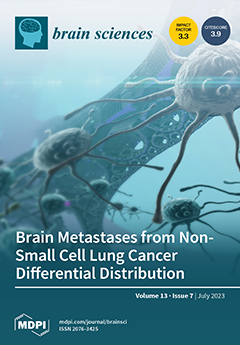The Global Burden of Disease Study (GBD 2019 Diseases and Injuries Collaborators) found that diabetes significantly increases the overall burden of disease, leading to a 24.4% increase in disability-adjusted life years. Persistently high glucose levels in diabetes can cause structural and functional changes
[...] Read more.
The Global Burden of Disease Study (GBD 2019 Diseases and Injuries Collaborators) found that diabetes significantly increases the overall burden of disease, leading to a 24.4% increase in disability-adjusted life years. Persistently high glucose levels in diabetes can cause structural and functional changes in proteins throughout the body, and the accumulation of protein aggregates in the brain that can be associated with the progression of Alzheimer’s Disease (AD). To address this burden in type 2 diabetes mellitus (T2DM), a combined aerobic and resistance exercise program was developed based on the recommendations of the American College of Sports Medicine. The prospectively registered clinical trials (NCT04626453, NCT04812288) involved two groups: an Intervention group of older sedentary adults with T2DM and a Control group of healthy older adults who could be either active or sedentary. The completion rate for the 2-month exercise program was high, with participants completing on an average of 89.14% of the exercise sessions. This indicated that the program was practical, feasible, and well tolerated, even during the COVID-19 pandemic. It was also safe, requiring minimal equipment and no supervision. Our paper presents portable near-infrared spectroscopy (NIRS) based measures that showed muscle oxygen saturation (SmO2), i.e., the balance between oxygen delivery and oxygen consumption in muscle, drop during bilateral heel rise task (BHR) and the 6 min walk task (6MWT) significantly (
p < 0.05) changed at the post-intervention follow-up from the pre-intervention baseline in the T2DM Intervention group participants. Moreover, post-intervention changes from pre-intervention baseline for the prefrontal activation (both oxyhemoglobin and deoxyhemoglobin) showed statistically significant (
p < 0.05, q < 0.05) effect at the right superior frontal gyrus, dorsolateral, during the Mini-Cog task. Here, operational modal analysis provided further insights into the 2-month exercise intervention effects on the very-low-frequency oscillations (<0.05 Hz) during the Mini-Cog task that improved post-intervention in the sedentary T2DM Intervention group from their pre-intervention baseline when compared to active healthy Control group. Then, the 6MWT distance significantly (
p < 0.01) improved in the T2DM Intervention group at post-intervention follow-up from pre-intervention baseline that showed improved aerobic capacity and endurance. Our portable NIRS based measures have practical implications at the point of care for the therapists as they can monitor muscle and brain oxygenation changes during physical and cognitive tests to prescribe personalized physical exercise doses without triggering individual stress response, thereby, enhancing vascular health in T2DM.
Full article






